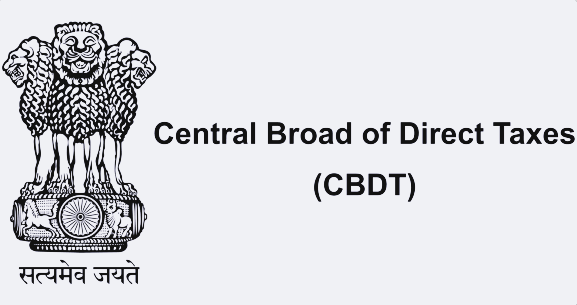
A decision that has attracted the attention of both corporations and taxpayers The Central Board of Direct Taxes (CBDT) recently announced a new exchange rate for the purposes of Tax Deducted at Source (TDS) on foreign currency income that will take effect on August 17, 2023. With this new development, it is crucial to comprehend the effects and nuances of the recently announced exchange rate for TDS reduction from the CBDT.
In this article, we will clarify CBDT’s newly notified exchange rate and explore its impact on TDS deduction for foreign currency income. We will delve into the key aspects of this development, discuss its ramifications, and provide insights to help taxpayers and businesses adapt to the change seamlessly. Stay tuned to unravel the complexities and ensure TDS compliance in the ever-evolving landscape of foreign currency income taxation.
Understanding TDS Deduction on Foreign Currency Income
Tax Deducted at Source (TDS) is a mechanism through which the government collects taxes at the time of making payments such as salary, interest, rent, etc. TDS deduction on foreign currency income is applicable when an individual or business receives income in a currency other than the Indian Rupee. The TDS amount is deducted based on the prevailing exchange rate at the time of payment.
The Impact of Exchange Rate Fluctuations on TDS Deduction
Exchange rate fluctuations can have a significant impact on TDS deduction for foreign currency income. Since the TDS amount is calculated based on the exchange rate at the time of payment, any fluctuations in the exchange rate can result in variations in the TDS deduction.
For instance, if the exchange rate strengthens, the Indian Rupee gains value against the foreign currency. In such a scenario, the TDS deduction may be lower compared to when the exchange rate was weaker, resulting in a higher tax liability for the taxpayer. On the other hand, if the exchange rate weakens, the TDS deduction may be higher, reducing the tax liability.
It is crucial for taxpayers to monitor exchange rate movements and understand their impact on TDS deduction to accurately assess their tax liabilities and ensure compliance.
Overview of the Newly Notified Exchange Rate by CBDT
The CBDT has recently notified a new exchange rate for the purpose of TDS deduction on foreign currency income. This exchange rate is used to convert the foreign currency income into Indian Rupees for calculating the TDS amount to be deducted.
By publishing the Income-tax (Seventeenth Amendment) Rules, 2023, the board has amended Rule 26 of the Income-tax Rules of 1962.
The newly notified exchange rate is determined based on various factors such as prevailing market rates, economic conditions, and government policies. It aims to provide a fair and standardized exchange rate for TDS deduction, ensuring consistency and transparency in the taxation process.
How the Newly Notified Exchange Rate Affects TDS Deduction on Foreign Currency Income
The introduction of the newly notified exchange rate by CBDT has implications for TDS deduction on foreign currency income. The exchange rate plays a crucial role in determining the TDS amount to be deducted, and any changes to the exchange rate can impact the tax liability of taxpayers.
Under the new exchange rate, the TDS deduction may increase or decrease depending on the fluctuations in the exchange rate. Taxpayers receiving foreign currency income need to understand the new exchange rate and its implications on their tax obligations.
Example of TDS Deduction under the New Exchange Rate
To better understand the impact of the newly notified exchange rate on TDS deduction, let’s consider a few examples and case studies.
Example 1: (USD Income)
An individual receives a payment of $10,000 in foreign currency, and the prevailing exchange rate is ₹75 to $1. Under the old exchange rate, the TDS deduction percentage applicable would be on the income of ₹750,000. However, under the newly notified exchange rate of ₹80 to $1, the TDS deduction percentage application would be on the income of ₹800,000.
This example illustrates how the newly notified exchange rate can affect the TDS deduction on foreign currency income, resulting in variations in the tax liability for taxpayers.
Steps to Calculate TDS Deduction on Foreign Currency Income under the New Exchange Rate
To calculate TDS deduction on foreign currency income under the newly notified exchange rate, taxpayers need to follow a few steps:
- Determine the foreign currency income received.
- Check the prevailing exchange rate notified by the CBDT.
- Convert the foreign currency income into Indian Rupees based on the exchange rate.
- Calculate the TDS deduction percentage applicable to the income type.
- Multiply the converted income by the TDS deduction percentage to arrive at the TDS amount to be deducted.
It is essential for taxpayers to use the correct exchange rate notified by the CBDT for accurate TDS calculation and compliance.
Expert Opinions and Recommendations on Dealing with the New Exchange Rate for TDS Deduction
Experts in taxation and finance provide valuable insights and recommendations on dealing with the new exchange rate for TDS deduction on foreign currency income:
- Stay updated: Regularly monitor CBDT notifications and stay informed about any changes in the exchange rate for TDS deduction.
- Seek professional advice: Consult tax professionals or experts to understand the implications of the new exchange rate on your specific business and tax obligations.
- Maintain accurate records: Keep detailed records of foreign currency income, exchange rates, and TDS deductions to ensure accuracy and compliance during audits or assessments.
- Consider hedging strategies: Explore hedging options to mitigate the impact of exchange rate fluctuations on TDS deductions and tax liabilities.
Conclusion
The newly notified exchange rate by CBDT for TDS deduction on foreign currency income has significant implications for taxpayers, especially businesses operating on a global scale. Understanding the impact of this development is crucial for accurate tax planning, compliance, and financial management. By staying informed, adapting to the new exchange rate, and seeking professional advice when needed, taxpayers and businesses can ensure compliance and optimize their tax planning strategies in the ever-evolving landscape of foreign currency income taxation.

